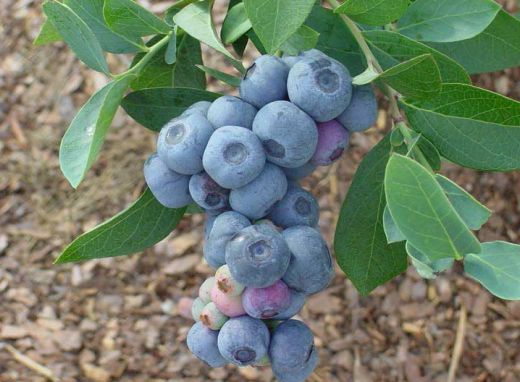Miss Jackie
This new variety is later ripening than Miss Alice Mae and ‘Star’, ripening more closely to our 2006 release ‘Camellia’. The latter half of May is a production time frame in south Georgia that often has a “fruit gap”. This gap occurs as the main season highbush varieties expire; and, before the early season rabbiteye varieties come into significant production. ‘Camellia’ has proven to help fill this gap, but additional varieties are needed. Miss Jackie fits the timing of the gap well, and should compliment ‘Camellia’ nicely. The variety generally flowers later than main season varieties, but it also ripens later. This variety, like ‘Camellia’, could be used in production systems without frost protection to achieve later season highbush production. Fruit are high quality, and the bush is generally easier to manage than ‘Camellia’, as ‘Camellia’ can be overly vigorous, causing excessive plant “leggyness”. Miss Jackie isn’t necessarily expected to replace ‘Camellia’, but it will be a strong candidate as a companion variety, or as a variety offering an additional option to growers in this production window.
Miss Alice Mae
This is a main season southern highbush cultivar aimed at replacing an older industry standard ‘Star’. Miss Alice Mae will flower a few days later than ‘Star’, helping to avoid some freeze damage scenarios, but it would still be suggested that Miss Alice Mae be considered for production using frost protection measures. The new variety should ripen during the current “peak” of southern highbush season, which is around the first week of May in south Georgia. Yields and berry quality are very good, and the variety will hopefully provide the industry a new main season workhorse.
Miss Lilly
This variety is expected to offer growers fruit that ripens in the early to main season, but without the requirement of frost protection. Miss Lilly flowers very late, yet ripens with ‘Star’ and Miss Alice Mae. Many growers are looking for some reliable main season highbush varieties that they do not have to over manage with frost protection expense. Miss Lilly yields are less than ‘Star’ or Miss Alice Mae on average, but the yields are steady from year to year due to the late flowering habit. Therefore, the variety nearly always escapes cold damage. The lower per plant yield for Miss Lilly can be somewhat compensated by higher density planting, since the plant is relatively narrow and upright. Higher density planting should achieve good per acre yields in that case. But, regardless, here are a number of growers looking for an easier to manage, early ripening southern highbush. Miss Lilly could be grown with ‘Camellia’ and Miss Jackie to provide early and later ripening fruit on the same farm.

